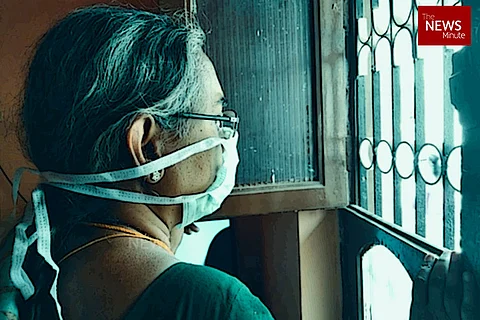

The Karnataka government has issued detailed guidelines for the isolation of COVID-19 patients at home.
Until now, COVID-19 patients were isolated at COVID Care Centres or in hospitals in the state. But with the cases rising in Karnataka, health officials released guidelines for allowing patients who are asymptomatic or have mild symptoms to be isolated at home. It followed the guidelines laid down by the centre on Thursday.
The home isolation of COVID-19 patients will be only after the home is assessed by government health officials. Moreover, the patient's condition will be informed to the neighbours. The isolation will be done with the knowledge of the family members and the physician.

"The patient shall have a pulse oximeter, digital thermometer and personal protective equipment (facemasks, gloves) to be used during home isolation," the guidelines laid down by the government stated.
After a patient receives the positive COVID-19 test report, health officials will assess the patient's condition and the condition of the house. If the patient is asymptomatic or exhibiting mild symptoms, they will be eligible for home isolation. The patients should be younger than 50 years of age and their oxygen saturation level should be greater than or equal to 95%.

"If the patient has the following comorbidities - Hypertension, diabetes, obesity, thyroid disease; they shall be well managed and under good clinical control as assessed by medical officer/physician," the guidelines stated.
But patients with serious comorbid conditions like kidney diseases including patients on dialysis, heart diseases, stroke, tuberculosis, cancer, people living with HIV, immune-compromised, on steroids and immune-suppressants, etc. will not be allowed to isolate themselves at home.

Patients in home isolation should seek the advice of the monitoring health department staff when symptoms of COVID-19 emerge.
The patient will have to follow a series of stringent instructions maintaining distance from others in the house, disinfecting surfaces and wearing a N95 mask at all times.
Patients will be released from home isolation when they do not exhibit symptoms. It will also be 17 days after the onset of symptoms or date of sampling (for asymptomatic patients) and at least 10 days after fever subsides.
"There is no need for the RT-PCR/CBNAAT/True-NAT test after the home isolation period is over," the guidelines added.